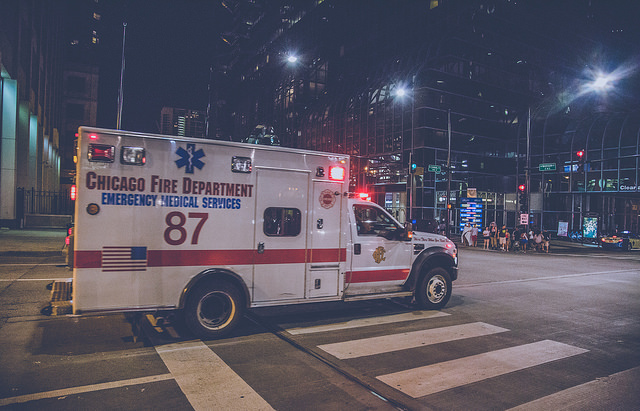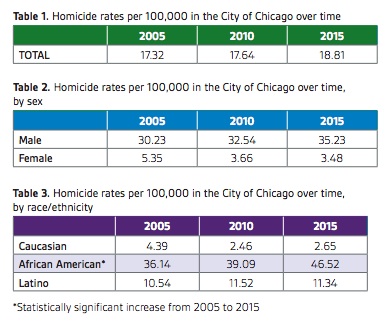Black People In Chicago Almost 20X More Likely To Be Killed Than White People
By Mae Rice in News on Jul 26, 2016 6:27PM
Black people in Chicago are killed at higher rates than white people—in 2015, they were killed at more than 18 times the rate of white people, to be exact. That's according to a new report that the Illinois Violent Death Reporting System at Lurie Children's Hospital released this month, reviewing homicides in 2005, 2010 and 2015.
Homicides and homicide rates increased slowly across the three non-consecutive years, but the most significant finding was that the homicide rate in Chicago isn't actually uniform citywide (though the citywide homicide rate is often reported). The homicide rate is different for different demographic groups—and the homicide rate is especially high for black Chicagoans.
In 20015, about 36.14 in 100,000 black Chicagoans were murdered, which put the homicide rate for black people in Chicago at more than twice the citywide rate that year (17.32 in 100,000 ) and eight times the rate for white people that year (4.39 in 100,000). If that wasn't upsetting enough, the homicide rate among black Chicagoans was also the only homicide rate that rose in a statistically signifiant way from 2005 to 2015—from 36.14 in 100,000 to 46.52. (The latter number was more than 18 times the rate at which white people were killed in the same year.)
As the black homicide rate rose in Chicago, homicide rates among women, men, Latinos and white people shifted in small but ultimately statistically significant ways. Still, it's worth noting that men are killed much more frequently than women (at rates of 35.23 and 3.48 in 100,000 in 2015). Also, though Latinos were murdered at roughly the same rate throughout the 10 year period examined, that rate was severalfold the white homicide rate: roughly four times it in 2015.
This is all best shown in these three tables, pulled from the study (which DNAinfo also wrote about earlier today):
Though this study has some weaknesses—it's brief, for instance, and doesn't break down the numbers by gender and race, or look at homicide rates for Asians—it confirms what many of us have noticed: safety in Chicago is a luxury, largely wealthy areas and white people.

